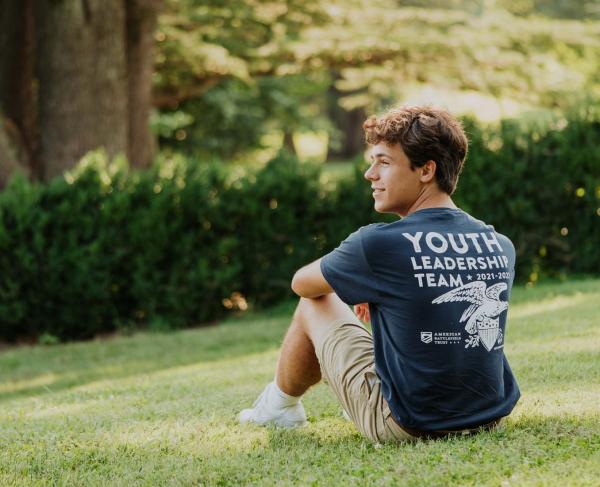Trading Rulers for Rifles: The Schoolteachers Regiment
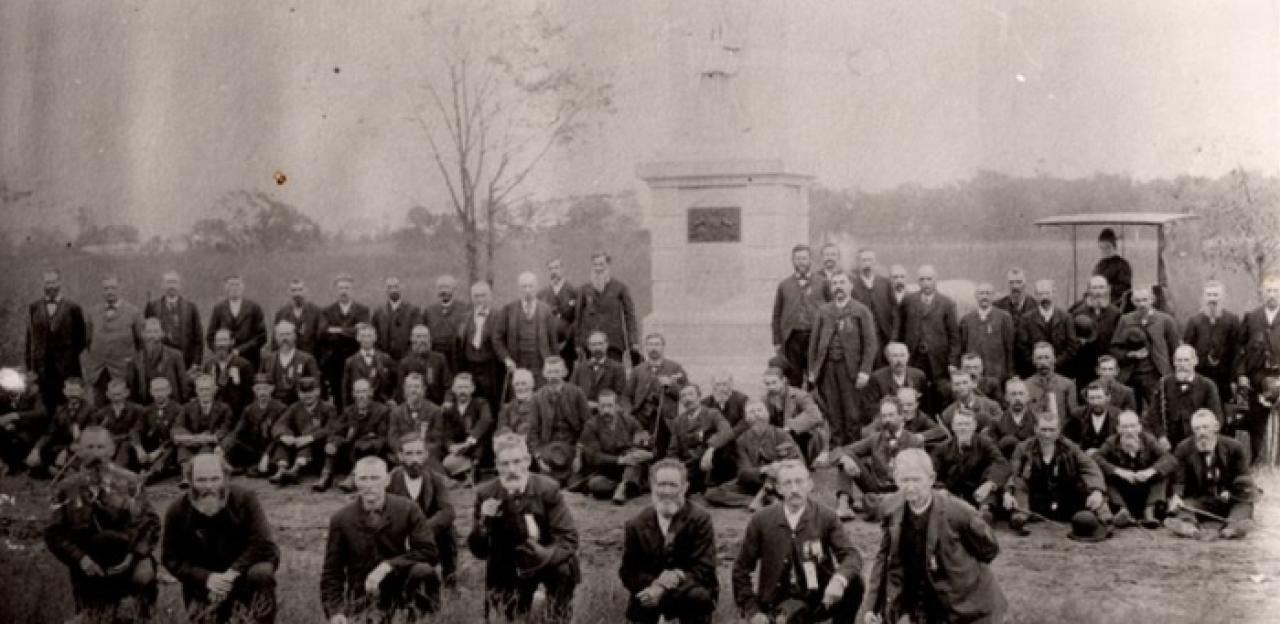
Marcie Schwartz
"I know not, how men could have fought more desperately, exhibited more coolness, or contested the field with more determined courage,” wrote Lt. Col. George McFarland when describing the conduct of the 151st Pennsylvania as they covered the retreat of the battered Iron Brigade and singularly faced a Confederate onslaught on the first day of the Battle of Gettysburg. These men, although brave indeed, were not battle-hardened West Point graduates. They were schoolteachers.
The 151st Pennsylvania Regiment was organized in September of 1862 and its ten companies congregated at Camp Curtin in Harrisburg that October. The recruits had all signed up for a volunteer service term of nine months.
In Company D alone there were more than 60 schoolteachers and their significant and surprising numeric concentration earned the company and the regiment the sobriquet of the “Teachers Regiment” after the war. Many of these volunteers were teachers from the McAlisterville Academy in Juniata County, along with their principal turned company commander, Lt. Col. George McFarland.
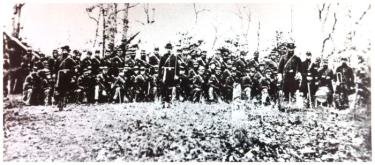
On November 28, the regiment was ordered to Washington and then proceeded to Arlington Heights. On December 3, the regiment moved with Col. Frederick D'Utassay’s Brigade to Union Mills, Virginia, where it was placed on duty. Now in enemy territory, Col. D'Utassay, and his successor, General Alexander Hays, strictly instructed and drilled the 151st Pennsylvania while always looking out for an attack by John Singleton Mosby's elusive raiders.
In February, 1863, the regiment was transferred to Belle Plain, where it was brigaded with the 121st, 135th, and 142nd Pennsylvania regiments to form the First Brigade, of the Third Division of the First Corps commanded by General John Fulton Reynolds. The harsh winter conditions and left many soldiers ill, convalesced, or dead.
Before marching to the battlefield at Chancellorsville, the First Corps moved to Franklin's Crossing, where it encountered its first taste of battle by way of vigorous shelling from the enemy on the opposite shore. On May 2, 1863, the Corps made a forced march to United States Ford, and after crossing the 151st was summoned to the front to occupy the line on the mostly inactive First Corps’ right flank. The regiment guarded the crucial Rapidan River crossing at United States Ford, but saw little action for the rest of the battle.
After the Union defeat, there ensued a bitter confrontation about how to best use the Army of the Potomac to meet the threat of a Confederate invasion of the North. General Joseph Hooker resigned his command and was immediately replaced by Major General George Gordon Meade. Thus, the next destination for the 151st Pennsylvania Volunteers would be a part of the land familiar to all of them: the crossroads town of Gettysburg.
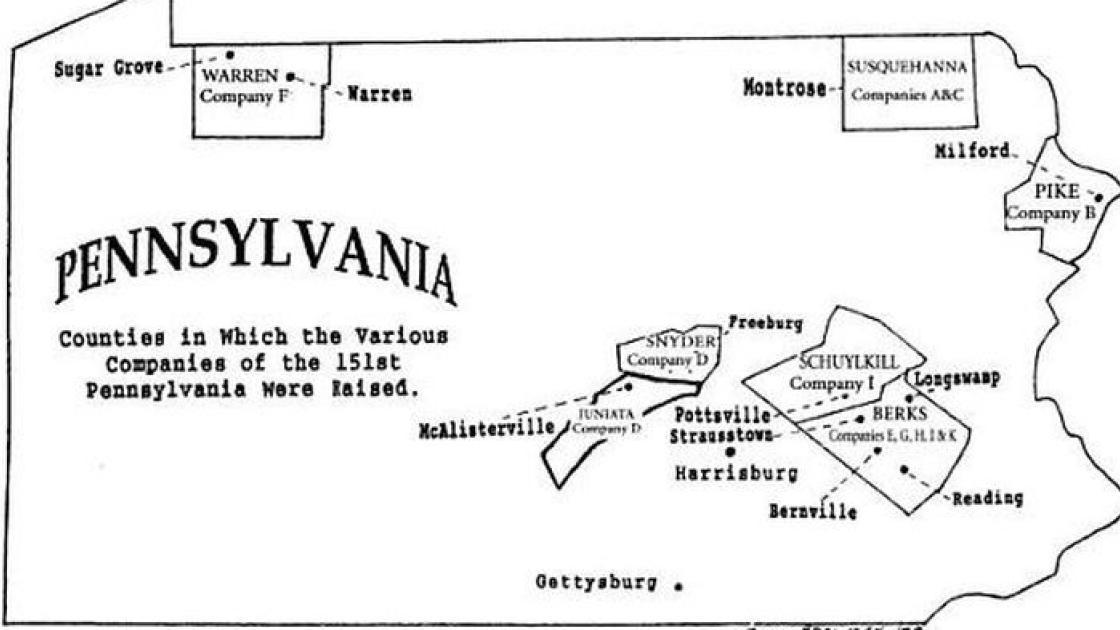
The march to Gettysburg commenced on the 12th of June, the right wing of the army composed of the First and Eleventh Corps, under General John Reynolds, making a forced march of one hundred and five miles in three days, throwing itself suddenly between Robert E. Lee's army, (which was moving north through the Shenandoah Valley,) and Washington. At Broad Bun they halted for the enemy to develop his plans. Reynolds then hastened forward to Middleburg, where he again interposed between the enemy and the cities of Baltimore and Washington.
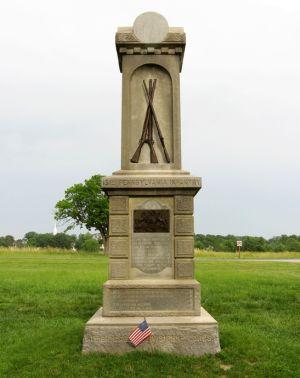
As the enemy pushed on into Pennsylvania, the First Brigade, now commanded by Colonel Chapman Biddle, arrived at the quiet, bucolic town of Gettysburg on the morning of July 1, 1863, and took position on the extreme left flank of the First Corps. The 467 men of the 151st Pennsylvania held the left of the brigade line. The regiment moved to the top of McPherson's Ridge and remained there until the afternoon when it was detached as a reserve unit and moved to occupy the grounds next to Lutheran Theological Seminary, directly behind the Iron Brigade and the rest of Colonel Biddle’s First Brigade as they fiercely fought against the North Carolinians of General J. Johnston Pettigrew’s Brigade.
Around 2:30pm, a gap opened between the Northern brigades, endangering the entire Union position, and the 151st was ordered to advance. Closing the broken line, the 151st had not even gotten into position before men began to fall. The Iron Brigade, having borne the brunt of the battle for hours, withdrew, exposing the right flank of the 151st. The regiments on the left were likewise overpowered and, one by one, they were forced back until the 151st Pennsylvania stood alone to resist the enemy's front and flank fire. The smoke was blinding and the crack of the rifles was deafening as the opposing lines traded volleys at a mere 20 yards apart. Finally, when more than half of the regiment had fallen, the order was given to withdraw, rallying at a rail entrenchment by the Seminary. Fresh Confederate regiments, South Carolinians under Col. Abner Perrin, launched an assault. The 14th South Carolina hit the 151st position fiercely in an attempt to finish off the flank of the First Corps. While aggressively attacking the numerically superior force, Lt. Col. McFarland received severe wounds in both legs. With their commander severely wounded and the line beginning to fracture, the 151st retreated towards town.
Only 92 survivors regrouped on Cemetery Ridge that night. By morning of July 2, the total had risen to 113 men. Out of the 467 men brought to the field, 337 men were killed, wounded, or captured, the second highest loss of any Union regiment at Gettysburg—72% casualties. Lt. Col. McFarland survived, but his left leg was amputated below the knee.
Despite these heavy losses, the remaining troops rallied and participated in the repulse of Pickett's Charge on July 3 alongside the 80th New York on the Union left flank, maintaining "sharp fire" against the enemy. After the Confederate retreat, the 151st rejoined the brigade near General Meade’s headquarters. They briefly participated in the pursuit of Lee before their nine month term of engagement expired and the remaining soldiers were mustered out of service on July 27th, 1863.But was this terrible sacrifice in vain? The tenacity of the 151st ensured the safe withdrawal of the First Corps on July 1 and still rallied despite heavy losses to participate in Pickett’s Charge July 3. Due to the tenacity of 151st Pennsylvania, the 26th North Carolina, the regiment that directly faced the 151st as they covered the retreat of the First Corps, suffered the greatest total loss of any regiment in the Battle of Gettysburg. The 11th North Carolina, the regiment that flanked the 151st before they retreated to the Seminary, takes the place of the second greatest total loss of any regiment.
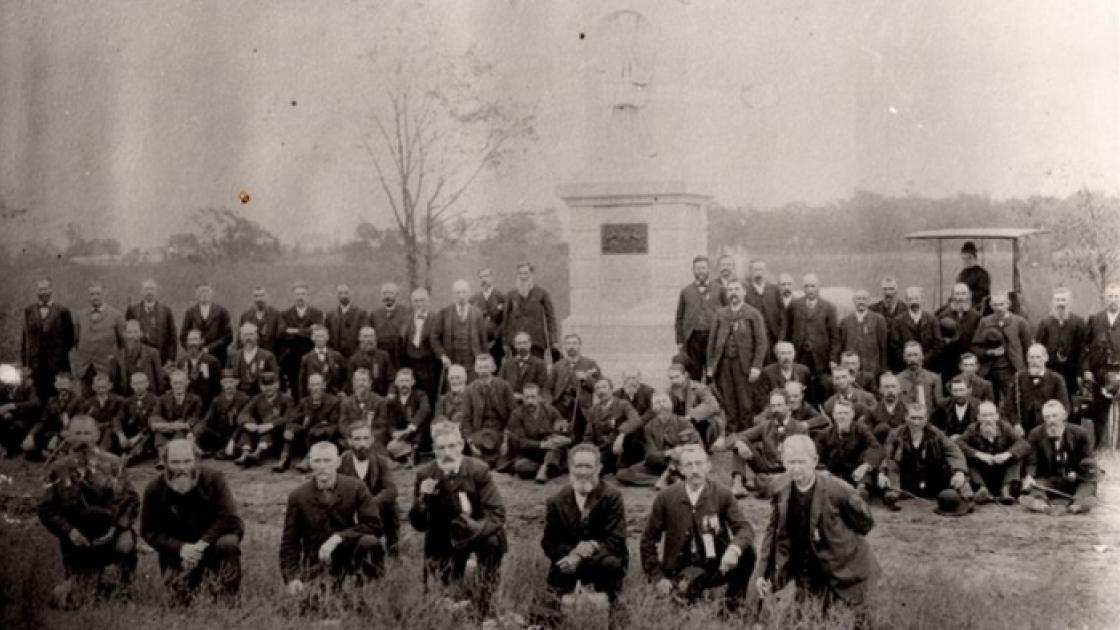
The men of the “Schoolteacher’s Regiment” stood fast in the face of danger and death, critically ensuring the safety of the Union Army during the bloodiest battle of the Civil War. General Abner Doubleday, the successor of General Reynolds as commander of the First Corps, lauded the heroic actions of the “Schoolteacher’s Regiment”:
"At Gettysburg, they won, under the brave McFarland, an imperishable fame. They defended the left front of the First Corps against vastly superior numbers; covered its retreat against the overwhelming masses of the enemy at the Seminary, west of the town, and enabled me, by their determined resistance, to withdraw the Corps in comparative safety. This was on the first day. In the crowning charge of the third day of the battle, the shattered remnants of the 151st Pennsylvania [...] flung themselves upon the front of the rebel column […] I believe they saved the First Corps, and were among the chief instruments to save the Army of the Potomac, and the country from unimaginable disaster.”
Related Battles
23,049
28,063


